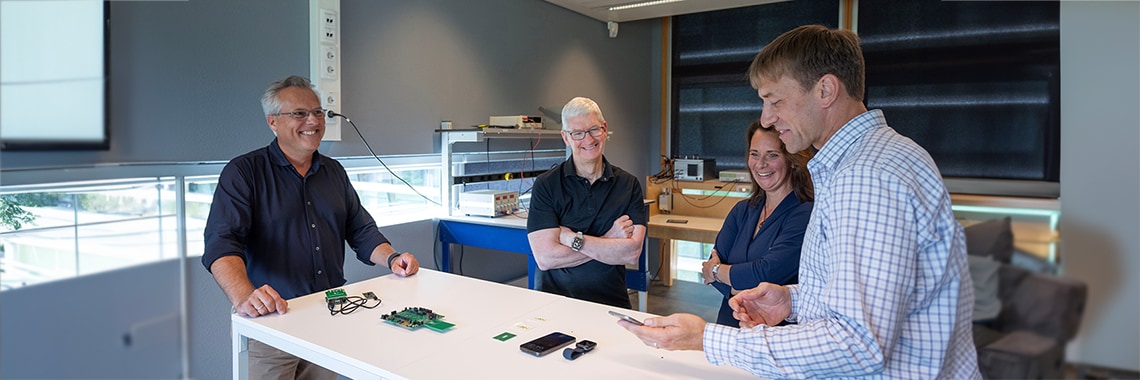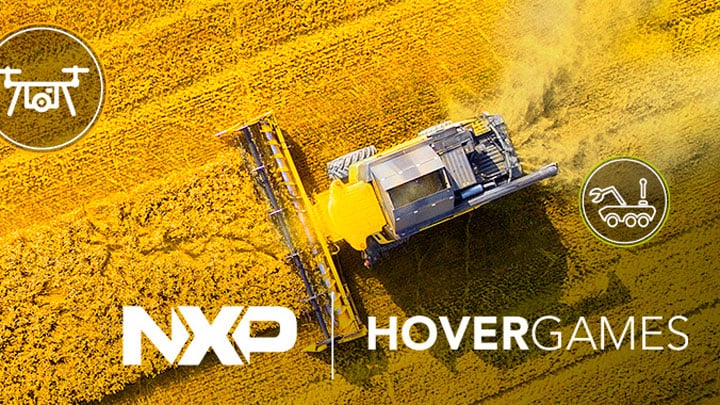Last month NXP hosted our long-time partner in innovation — Apple — at our corporate headquarters in Eindhoven. Eindhoven has been a centre of electronics innovation since the 1920’s and today the High-Tech Campus (HTC) is home to more than 12,500 researchers, engineers and innovators from all over the world.
 L to R: Linda Lengowski, VP Corporate Strategy, NXP CEO Kurt Sievers, Eric-Paul Schat, Senior Director Sustainability & Human Rights, Clara Otero Perez, Senior Director Marketing, committing to the UN SDGs.
L to R: Linda Lengowski, VP Corporate Strategy, NXP CEO Kurt Sievers, Eric-Paul Schat, Senior Director Sustainability & Human Rights, Clara Otero Perez, Senior Director Marketing, committing to the UN SDGs.
Innovation isn’t the only priority of the HTC though. The campus is putting effort into becoming the most sustainable campus in Europe by 2025. This ambition translates to highly sustainable power sources and smart power management, as well as comprehensive waste recycling and biodiversity across the campus.
NXP is committed to sustainability and helping to improve lives through technology. Learn more about these efforts and ideas in our sustainability magazine.
 Kurt Sievers, NXP CEO, Linda Lengowski, VP Corporate Strategy and Tim Cook, Apple CEO discussing renewable energy solutions.
Kurt Sievers, NXP CEO, Linda Lengowski, VP Corporate Strategy and Tim Cook, Apple CEO discussing renewable energy solutions.
Both NXP and Apple are aligned in this commitment to sustainability evidenced in the HTC. A key focus for us is to make our products and our innovation more sustainable and environmentally-friendly. We have very clear environmental, social and governance goals with a mission to enable a safer, more secure and sustainable world through innovation.
For example:
- By 2027: 35% less carbon emission, 50% renewable electricity, 60% wastewater recycling, 90% of total waste recycled. Last year alone, NXP recycled 48% of water and 83% of waste.
- With each new generation of products, we aim for higher performance in a smaller footprint, with the goal of saving on raw materials and emission.
Hear more about how we are working on reducing waste and improving energy usage in our manufacturing facilities in this video.
Contributing to Apple’s First Carbon-Neutral Products
Apple's visit was the opportunity to discuss our shared commitment to delivering innovative, secure and sustainable products to the world. We showed Tim demos illustrating NXP’s evolution within iPhone. Near Field Communication (NFC) technology first introduced in iPhone 6 in 2014 and was followed by subsequent generation of chipsets to enable more NFC features. NXP is well known for NFC technology — we co-invented it with Sony in 2002. It is a proximity technology, so it functions when devices are brought close together or touch. When devices are not close, NFC is dormant so it is not drawing significant power.
Over time, integration and innovation resulted in a significant reduction in the footprint of the silicon, the materials used for manufacturing and a decrease in power consumption, helping to contribute to carbon neutral products, such as the new Apple Watch Product line that is available for purchase today.
Read more about how technology accelerates sustainability improvement in this recent interview with Kurt Sievers.






